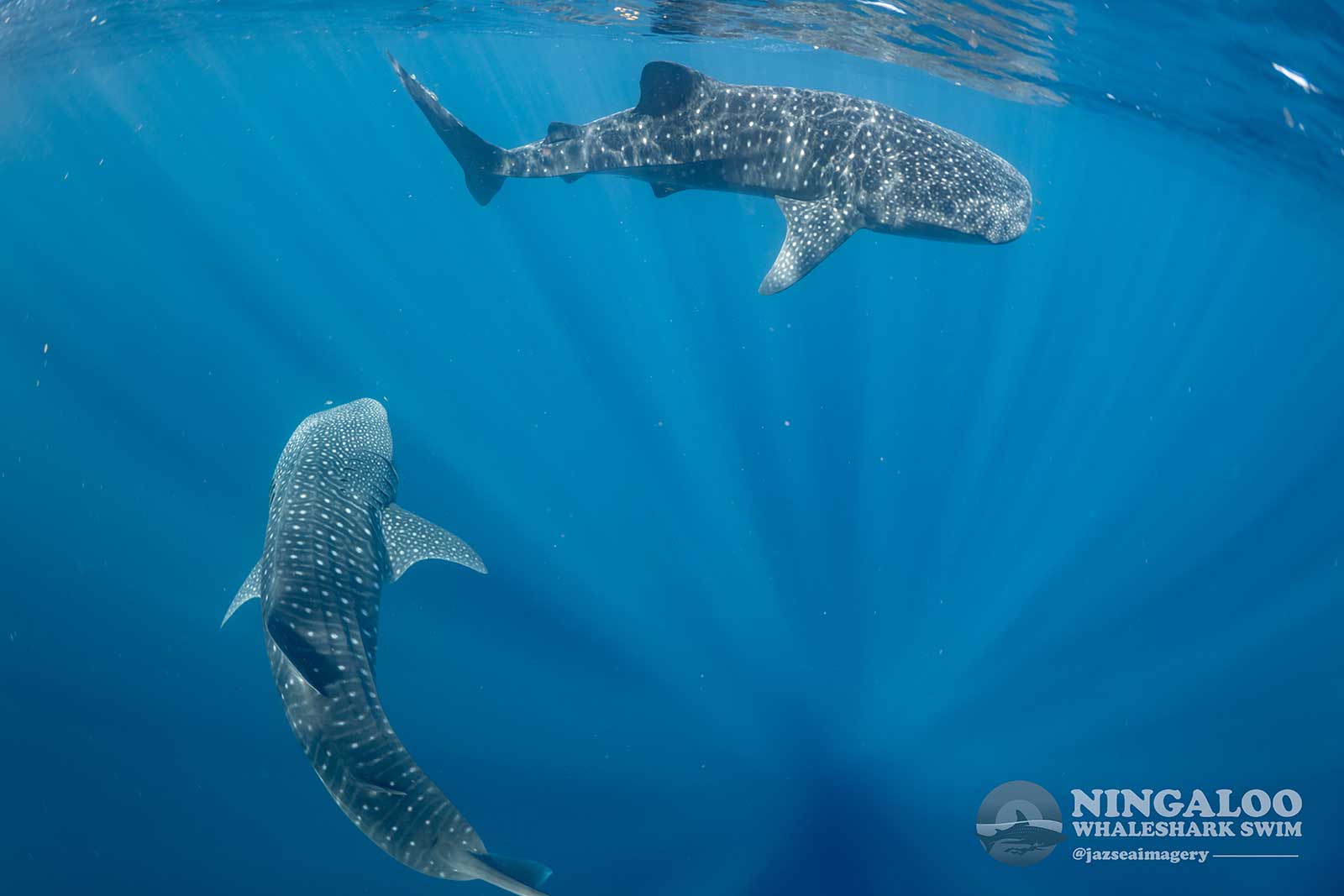As with most sharks, their name comes from their appearance – a whale-sized shark. Whale sharks, given their majesty and intrigue, are still relatively elusive to the scientific world. However, the Ningaloo Reef is home to one of the most reliable whale shark aggregations in the world! Returning to the Ningaloo each year around March to begin their annual feeding frenzy. This is why the Ningaloo is home to some of the best natural whale shark interactions in the world!
Ningaloo Whale Shark Swim’s whale shark tours are designed to provide amazing opportunities to interact with these big sharks, but also to experience the amazing wildlife of the World Heritage listed Ningaloo Reef.
Quick facts:
- Whale sharks are believed to live well over 100 years.
- They are the largest fish in the ocean, with the largest recorded specimen just under 19m.
- They are filter feeders, feeding on mostly plankton and krill
- Whale sharks have tiny teeth
- The skin on a whale shark’s back can be 15 cm thick!
Whale shark Biology
The whale shark (Rhincodon typus) is the largest shark in the ocean, although they have been recorded to near 20m in length, the largest sharks we see on the Ningaloo are around 12m. A shark of this size can still reach around 11 tonnes! Most common sightings on the Ningaloo Reef are sharks between 4-8m in length. Whale sharks have a very distinctive appearance, with a broad, flattened head and large mouth. They have a dark blue/grey upper body that’s covered in white spots, with a white underbelly.
The skin on a whale shark’s back is extremely thick and used as a form of protection. This thick skin also gives whale sharks the ability to heal from major injuries. Unfortunately whale sharks with propeller injuries are a common sight on the Ningaloo, but even we have seen whale sharks recover from these scars overtime!
Very little is known about whale shark reproduction. We know that they sexually mature at a late age ~30-35 years. The only recorded mating evidence (although unsuccessful) was recorded on the Ningaloo Reef in 2019 by a spotter plane. Whale shark birth has never been observed and there have only been 7 whale shark pups seen in the world. All information regarding whale sharks’ reproduction we have from a dead specimen caught in Taiwan in 1996 known as ‘Mega Mumma.’ She had 300 different whale shark pups inside her that were all at different stages of development. This indicates that female whale sharks may be able to store sperm until they need it.
Where are they?
Whale sharks are a pelagic species found in all tropical and temperate seas. There are regular whale shark aggregations in Australia, Philippines, Mexico, Mozambique, Thailand and the Galapagos. However, whale sharks have been spotted in stranger places, with one being sighting in Rockingham down south!
Although they are associated with shallow waters, whale sharks are seen at greater depths, with the ability to dive to over 2000m!






